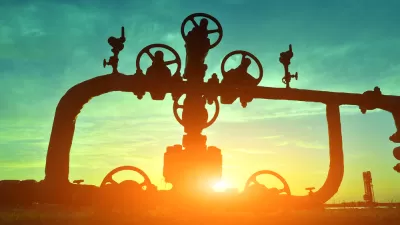In order for new coal power plants to meet the EPA's new rules for reduced emissions, they will have to rely on unproven carbon capture and storage (or sequester) technologies, putting the legality of the rule in doubt.
Matthew L. Wald and Michael D. Shear delve into the largely untested technology that plays a pivotal role in President Obama's plan to transform the number one source of U.S. greenhouse gas emissions, and the crucial role it plays in reducing carbon emissions from new coal power plants.
As noted here last Friday when EPA Administrator, Gina McCarthy, released the long-awaited, 2013 Carbon Pollution Standard for New Power Plants that "would limit new gas-fired power plants to 1,000 pounds of carbon dioxide emissions per megawatt-hour and new coal plants to 1,100 pounds of carbon dioxide. Industry officials say the average advanced coal plant currently emits about 1,800 pounds of carbon dioxide per megawatt-hour", Wald and Shear write.
Once the rule is in place, new plants would be required to capture carbon dioxide from the smokestacks and “sequester” it underground. Officials said the regulation could be completed by the fall of 2014.
In order to reduce emissions by almost 40%, coal power plants must use carbon capture & storage technologies. Is "CCS" technology readily adoptable by the coal power plant industry? Wald and Shear write that "to protect industries from pie-in-the-sky requirements, current law limits what rules the agency can make."
E.P.A. rules sometimes demand technological advancements, but the goals that the agency establishes have to be met by techniques that existing law describes as “adequately demonstrated.”
According to the writers, "(t)hree systems of carbon capture are in various stages of development. The most common is to convert coal into a mixture of hydrogen, carbon monoxide — which in this context is a fuel, not a pollutant — and carbon dioxide, and to recover the carbon dioxide at two different stages."
Are existing power plants using this technology? Wald and Shear write that "Ms. McCarthy cited four such projects. She told reporters on Friday that the draft rule was based on “technologies that are already entering the market and being constructed in plants today.” But the four she referred to in the committee hearing ranged from under construction to planned. None of them would sequester the carbon dioxide, and all would sell it".
Previously we have described CCS applications in Indiana, Wisconsin, and California.
Unpropitious news on CCS technology came from Norway the same day that EPA announced their new rule, regarding proposed plans to deploy CCS on an oil refinery. It was abandoning its carbon capture technology that it had announced in 2007.
"At both the national and international level, the development of technologies to capture and store CO2 has taken longer, been more difficult and more costly than expected," Oil and Energy Minister Ola Borten Moe told reporters.
FULL STORY: Challenges Await Plan to Reduce Emissions

Alabama: Trump Terminates Settlements for Black Communities Harmed By Raw Sewage
Trump deemed the landmark civil rights agreement “illegal DEI and environmental justice policy.”

Study: Maui’s Plan to Convert Vacation Rentals to Long-Term Housing Could Cause Nearly $1 Billion Economic Loss
The plan would reduce visitor accommodation by 25% resulting in 1,900 jobs lost.

Planetizen Federal Action Tracker
A weekly monitor of how Trump’s orders and actions are impacting planners and planning in America.

Wind Energy on the Rise Despite Federal Policy Reversal
The Trump administration is revoking federal support for renewable energy, but demand for new projects continues unabated.

Passengers Flock to Caltrain After Electrification
The new electric trains are running faster and more reliably, leading to strong ridership growth on the Bay Area rail system.

Texas Churches Rally Behind ‘Yes in God’s Back Yard’ Legislation
Religious leaders want the state to reduce zoning regulations to streamline leasing church-owned land to housing developers.
Urban Design for Planners 1: Software Tools
This six-course series explores essential urban design concepts using open source software and equips planners with the tools they need to participate fully in the urban design process.
Planning for Universal Design
Learn the tools for implementing Universal Design in planning regulations.
Caltrans
Smith Gee Studio
Institute for Housing and Urban Development Studies (IHS)
City of Grandview
Harvard GSD Executive Education
Toledo-Lucas County Plan Commissions
Salt Lake City
NYU Wagner Graduate School of Public Service



























